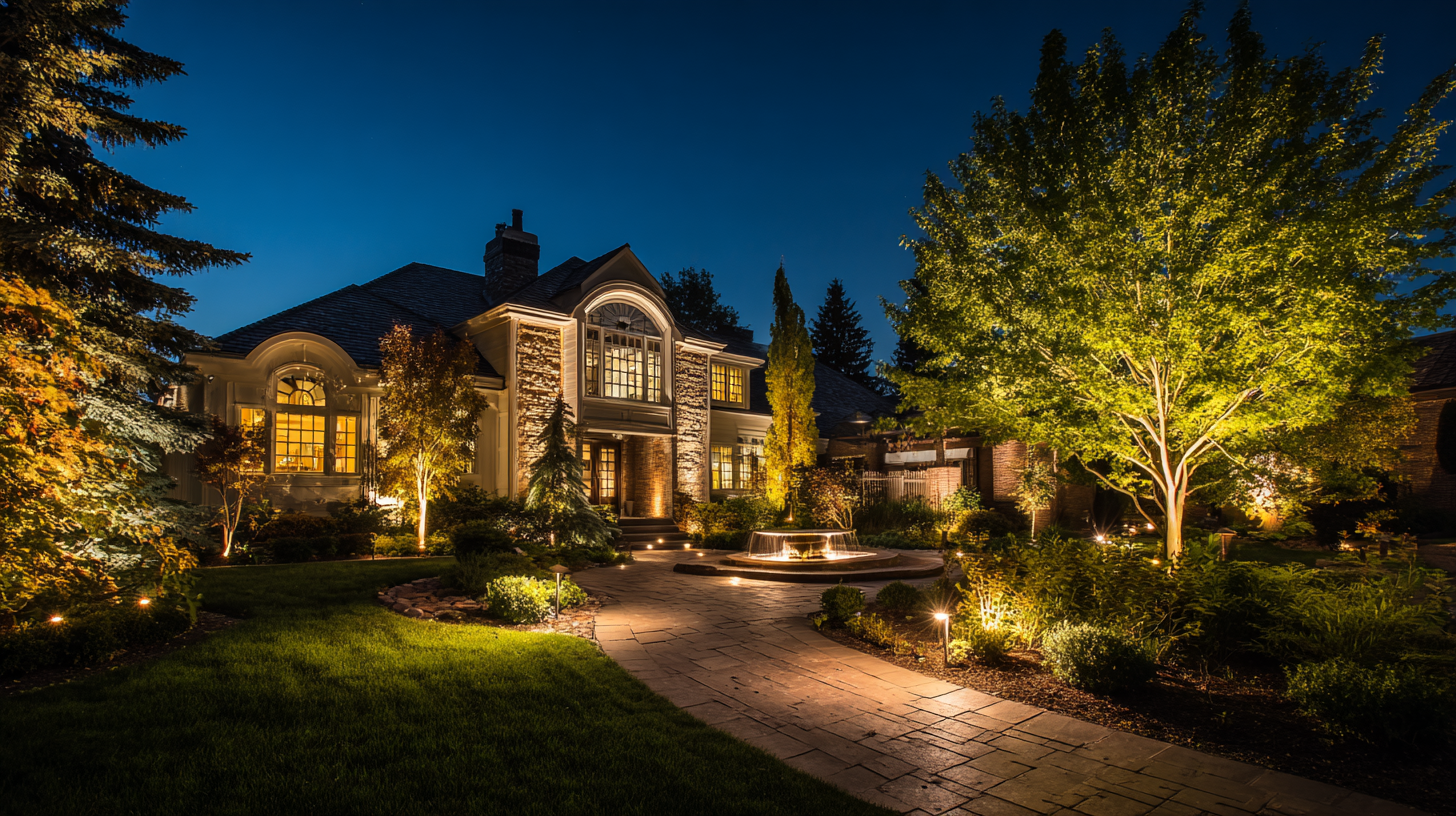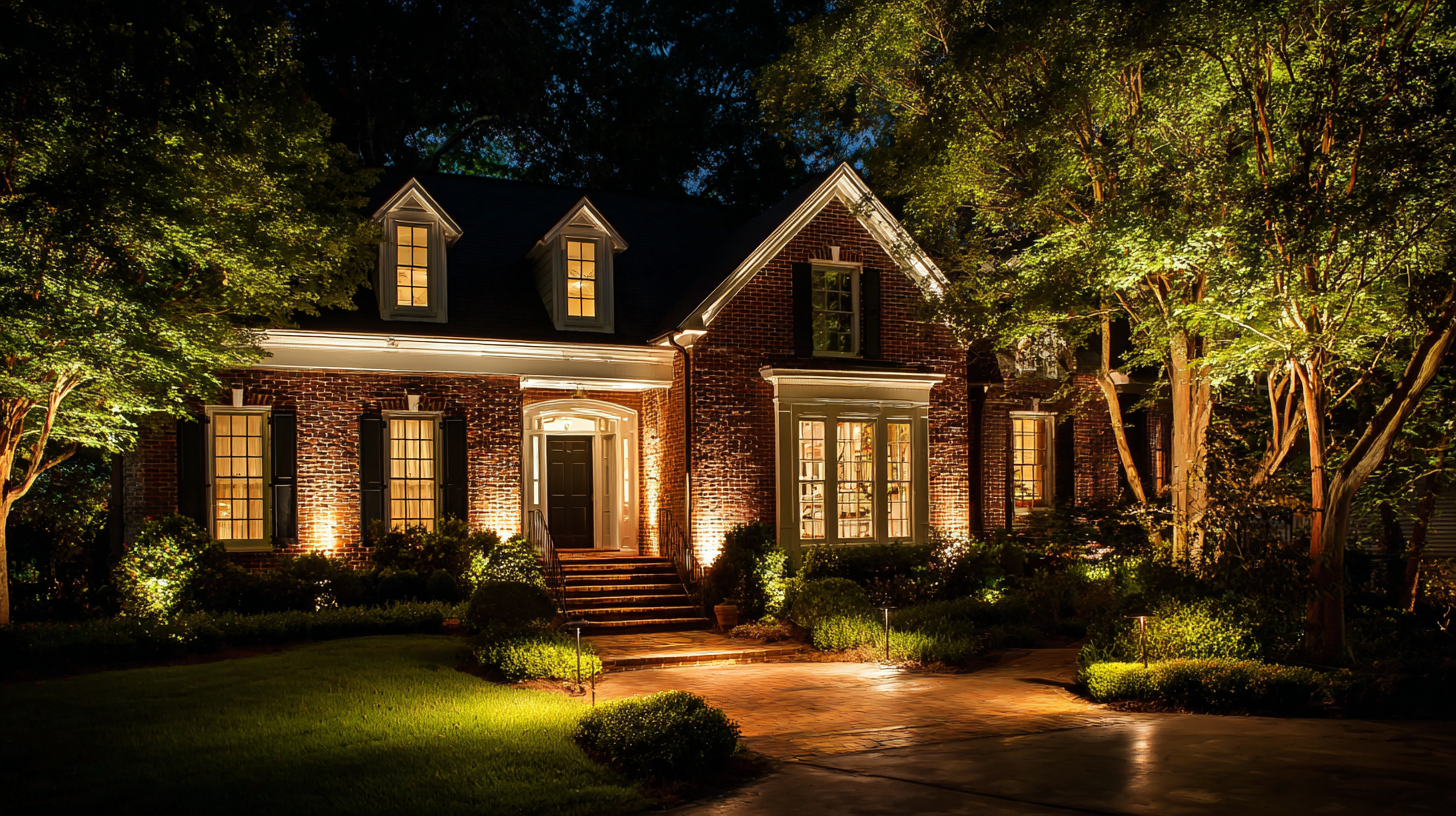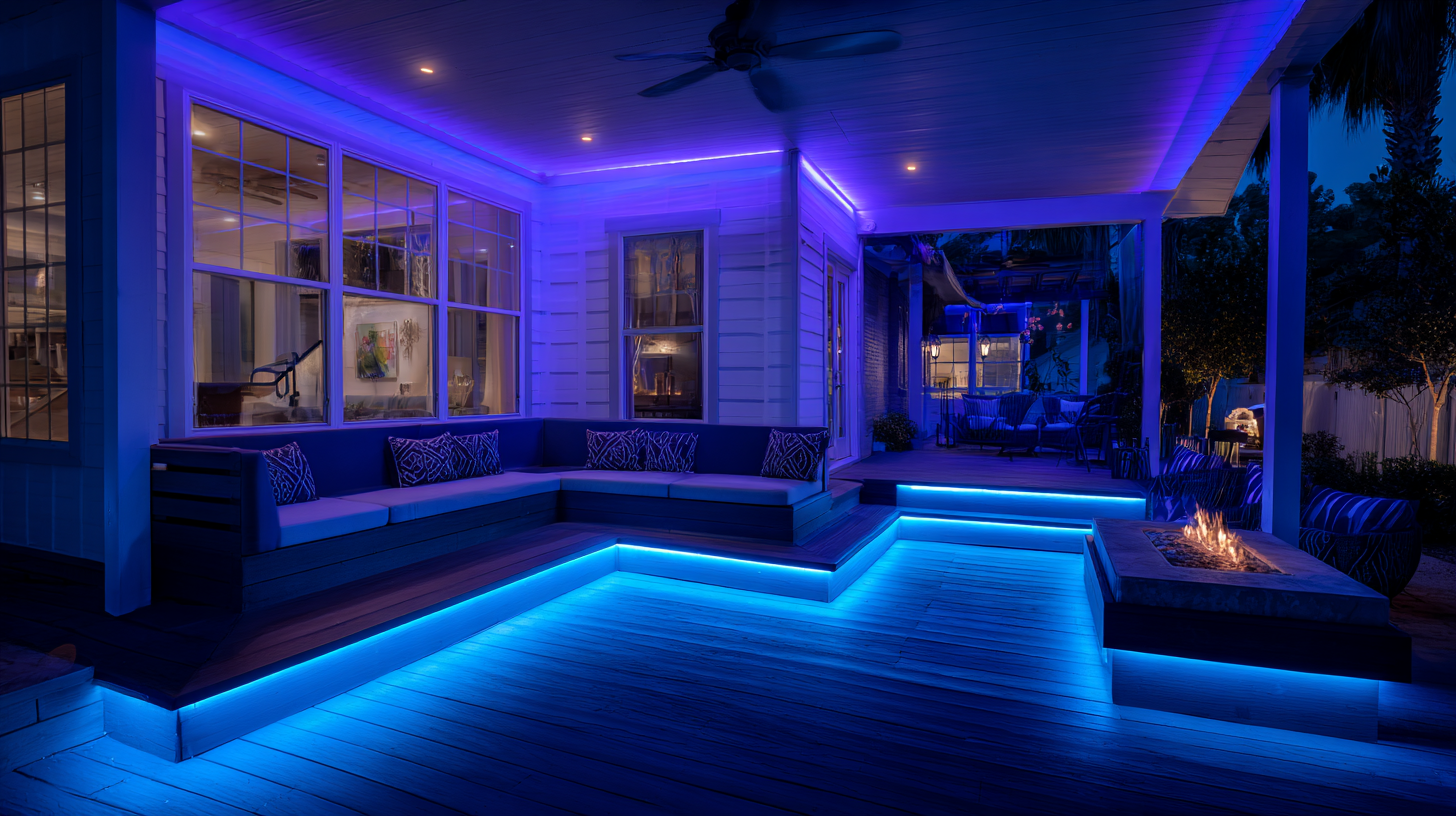7 Smart Tips for Choosing the Best Led Outdoor Lighting Solutions
As urban areas continue to evolve, the demand for effective and efficient lighting solutions has never been higher, particularly in outdoor settings. Recent studies indicate that LED outdoor lighting has become a top choice for both residential and commercial applications, attributed to its energy efficiency and long lifespan. According to the U.S. Department of Energy, LED lighting can use up to 75% less energy than traditional incandescent options, while lasting up to 25 times longer. This impressive efficiency not only reduces energy costs but also contributes to a decreased environmental footprint. Furthermore, the global LED market is projected to reach $100 billion by 2025, highlighting the increasing reliance on LED technologies in outdoor lighting designs. In this blog, we will explore seven smart tips to help you choose the best LED outdoor lighting solutions that suit your specific needs and preferences.

Key Factors to Consider When Selecting LED Outdoor Lighting
When selecting LED outdoor lighting solutions, certain key factors can significantly enhance your decision-making process. Firstly, consider the lumens output, as this indicates the brightness and effectiveness of the lighting in illuminating outdoor spaces. Aim for fixtures that offer adjustable brightness levels for versatility, ensuring they can cater to different occasions and requirements. Additionally, energy efficiency is paramount; opting for LED lights can lower energy consumption while providing long-lasting illumination, making them a sustainable choice for eco-conscious consumers.
Another crucial factor to consider is the durability and weather resistance of the fixtures. Since outdoor environments expose lighting to various elements, selecting products with adequate IP ratings ensures they can withstand rain, snow, and other harsh conditions without compromising performance. Furthermore, think about the aesthetics and how the lighting will fit with your landscape. Integrated designs that complement outdoor decor can enhance visual appeal while providing functional lighting. Ultimately, these considerations will create a harmonious blend of style, efficiency, and resilience in your outdoor lighting selections.
7 Smart Tips for Choosing the Best LED Outdoor Lighting Solutions
Understanding the Different Types of LED Outdoor Lights Available
When it comes to illuminating your outdoor spaces, understanding the different types of LED outdoor lights available is essential for making the best choice. LED floodlights are versatile and powerful, making them ideal for illuminating large areas such as driveways or entrance pathways. They offer high brightness levels and are designed to withstand various weather conditions, ensuring long-lasting performance. If you want to create a cozy ambiance, consider LED string lights, which add a touch of charm to patios and gardens. These lights come in various styles and colors, allowing for creative displays that enhance your outdoor experience.
Another option is LED garden lights, which are perfect for highlighting specific features like trees, shrubs, or decorative elements in your landscape. Available in various designs, including stakes and wall-mounted fixtures, these lights provide both functional and aesthetic benefits. For security needs, motion-sensor LED lights can be highly effective. They provide illumination when movement is detected, enhancing safety while conserving energy. By exploring these different types of LED outdoor lights, you can select the best solutions that cater to your specific needs, ensuring your outdoor spaces are both attractive and functional.

The Importance of Brightness and Color Temperature for Outdoor Spaces
When selecting LED outdoor lighting solutions, understanding brightness and color temperature is crucial. Brightness, measured in lumens, determines how well an area is illuminated. For pathways or outdoor seating areas, a softer brightness of around 300-500 lumens can create a welcoming ambiance. In contrast, spaces requiring safety and security might benefit from higher lumens—around 700-1000—to ensure every corner is well-lit.
Color temperature, measured in Kelvins, affects the mood of outdoor spaces. Warmer color temperatures (2700K-3000K) emit a cozy glow, perfect for garden lighting or lounging areas, while cooler temperatures (4000K-5000K) provide a more energizing feel, suitable for functional areas like driveways or garages. When choosing lighting solutions, consider the desired atmosphere for each space.
Additionally, consider the direction of the light. Uplighting can enhance the beauty of trees and architectural features, while downlighting is essential for safety along pathways. Always prioritize energy efficiency to save on costs in the long run, making LED a smart choice for outdoor environments.
How to Assess Energy Efficiency and Lifespan of LED Lighting
When selecting LED outdoor lighting solutions, understanding energy efficiency and lifespan is paramount. Recent studies highlight that LED technology surpasses traditional lighting options in both energy consumption and longevity. For instance, advanced LED light sources typically have an operational life that can reach upwards of 50,000 hours, significantly outlasting incandescent bulbs, which average around 1,000 hours. This durability not only reduces the frequency of replacements but also minimizes waste, a critical factor in today’s sustainability-focused landscape.

Moreover, the manufacturing and performance evaluation of LED products reveal that environmental impacts can be substantially lessened through optimized designs and materials. For example, a lifecycle assessment indicates that utilizing high-quality aluminum and polycarbonate can enhance LED efficiency while supporting recyclable properties. Studies comparing the overall performance of residential artificial lighting confirm that LEDs emerge as the clear winner, thanks to their superior energy efficiency and minimal environmental footprint.
Understanding these factors will guide consumers and businesses alike in making informed choices that align with sustainability goals.
Tips for Proper Installation and Maintenance of LED Outdoor Lights
When installing LED outdoor lighting, one of the first things to consider is the placement. Ensure that lights are positioned to effectively illuminate pathways, entryways, and any areas where security might be a concern. Proper alignment is crucial; lights should not be directed towards neighbors’ properties or into the eyes of passersby. To achieve this, it’s beneficial to test the positioning during different times of the day to see how the lighting changes.
Maintenance is equally important to maximize the lifespan and efficiency of your LED fixtures. Regularly check for dust or debris that might block light output, especially around bulbs and lenses. An occasional wipe with a damp cloth can prevent buildup. Additionally, inspect the connections and wiring periodically for any signs of wear or damage to ensure safety and optimal functionality. Remember that a well-maintained lighting system not only improves visibility and safety but also enhances the aesthetics of your outdoor space.
7 Smart Tips for Choosing the Best LED Outdoor Lighting Solutions
| Tip | Description | Installation Consideration | Maintenance Advice |
|---|---|---|---|
| Evaluate Brightness | Choose the right lumens for your outdoor area based on use. | Position lights to maximize brightness without creating glare. | Check brightness annually; adjust or replace bulbs as necessary. |
| Select the Right Color Temperature | Opt for a warmer tone (2700K-3000K) for cozy spaces. | Place warm lights in gathering spots, cooler in functional areas. | Ensure color consistency; replace mismatched bulbs. |
| Consider Energy Efficiency | Look for high efficacy ratings for long-term savings. | Install LEDs in hard-to-reach places to maximize efficiency. | Monitor energy bills to track consumption and savings. |
| Choose Durable Materials | Select fixtures designed to withstand weather and wear. | Ensure proper sealing and mounting to prevent moisture damage. | Inspect fixtures for rust or damage regularly and clean as needed. |
| Plan for Safety and Security | Position lights to illuminate pathways and entry points. | Use motion sensors for added security in vulnerable areas. | Test sensors regularly and adjust sensitivity settings. |
| Integrate Smart Technology | Consider smart lighting for remote control and automation. | Ensure Wi-Fi strength is adequate for smart devices outside. | Update software and apps to maintain functionality and security. |
| Focus on Design and Aesthetics | Select lighting that complements your home's style and landscaping. | Plan layout to highlight architectural features or plants. | Refresh landscaping and lighting as seasons change to maintain appeal. |






